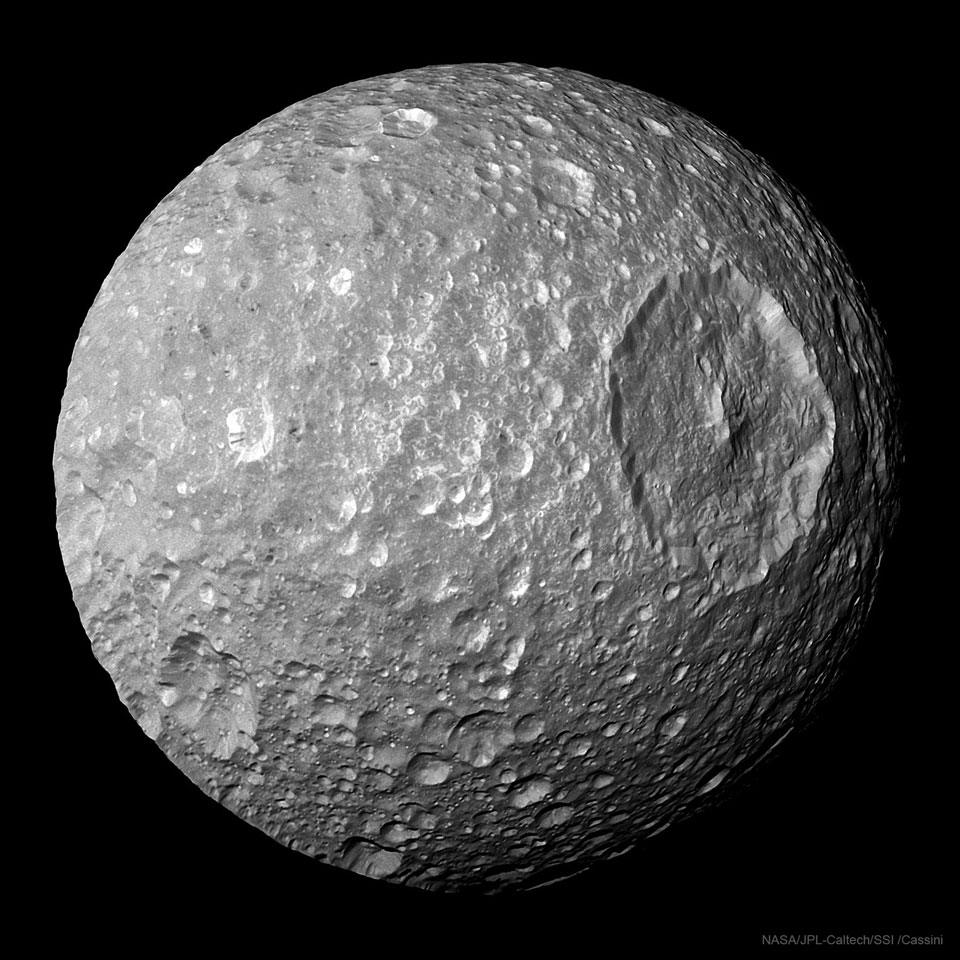2021年05月31日
Mimas: Small Moon with a Big Crater
Image Credit & Copyright: NASA, JPL-Caltech, Space Science Institute, Cassini
Explanation: Whatever hit Mimas nearly destroyed it. What remains is one of the largest impact craters on one of Saturn’s smallest round moons. Analysis indicates that a slightly larger impact would have destroyed Mimas entirely. The huge crater, named Herschel after the 1789 discoverer of Mimas, Sir William Herschel, spans about 130 kilometers and is featured here. Mimas’ low mass produces a surface gravity just strong enough to create a spherical body but weak enough to allow such relatively large surface features. Mimas is made of mostly water ice with a smattering of rock – so it is accurately described as a big dirty snowball. The featured image was taken during the closest-ever flyby of the robot spacecraft Cassini past Mimas in 2010 while in orbit around Saturn.
Interactive: Take a trek across Mimas
Tomorrow’s picture: streaks of Orion
土卫一:有大撞击坑的小卫星
影像提供与版权: NASA, JPL-Caltech, Space Science Institute, Cassini
说明: 不管它是被什么撞了,土卫一几乎粉身碎骨。此次撞击给土星的这颗小卫星,留下一个土星小卫星之中最大的撞击坑。分析指出只要撞击的规模再稍大一点,土卫一就会分崩离析。这幅影像所示的这个130公里宽的赫歇尔坑,是以1789年发现土卫一的赫歇尔爵士为名。低质量土卫一所产生的表面重力,刚好强到能让它聚成球体,不过也弱到让这种相对大型的表面结构得以留存下来。土卫一的主成份是水冰,并间杂了少量石块,故称它为大脏雪球相当贴切。这幅摄于2010年的主题影像,是由当时绕行木星的卡西尼号太空船,在史上最近距离掠过土卫一时所拍摄。
互动:徒步穿越土卫一
明日的图片: streaks of Orion



